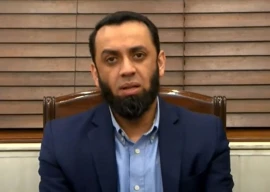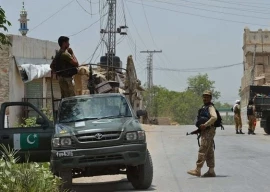
A renowned writer considered an authority on Taliban and Afghanistan, has described events in the tribal areas and Khyber-Pakhtunkhwa (KP) in the post- 9/11 environment. Unfortunately, his narration of ‘facts’ has no relevance to what actually happened on ground. Most of the foreign media and Pakistanis believe in what has been written in that book. Farhat Taj is one of them, and falls in the second category. She has a right to have her own views but since she is writing a book, she should have her facts right. Her book should not be based on guessing, narratives of ill-informed tribals, and her perceptions, created by books and articles, which may not be based on facts.
Operation Enduring Freedom was launched on October 7, 2001. The last time Osama was spotted was on November 21, 2001, in Nazian in Afghanistan, which is a Shinwari area. In all probability, he was not in Tora Bora after the operation was initiated, in the first week of December, 2001. In November 2001, Pakistan Army units moved to Tirah and Kurram Agency, both bordering Tora Bora, in coordination with US-led coalition forces. More than 150 al Qaeda members were apprehended in central Kurram, while fleeing Tora Bora. A large number took refuge in Shahi Kot in Paktia province in Afghanistan. In March 2002, coalition forces launched Operation Anaconda in the Shahi Kot area. In the third week of March, a large number of terrorists entered South and North Waziristan from Shahi Kot. Within a week, the first operation was conducted against these foreign militants and their local facilitators in April 2002. Many more raids were conducted on suspected terrorist hideouts in Fata and KP during 2002. About 80 foreigners from al Qaeda and the Islamic Movement of Uzbekistan were apprehended. The operations continued throughout 2003. Prominent al Qaeda members, including Khalid Sheikh Mohammad, were arrested by the ISI during this period. If the foreigners, including the Afghan Taliban, were protected by the ISI, how are these operations and the apprehensions of the top leadership of al Qaeda justified? There is no truth in allegations that the ISI settled these foreigners in Waziristan.
Published in The Express Tribune, April 18th, 2011.
1719315628-0/BeFunky-collage-(8)1719315628-0-405x300.webp)


1731329418-0/BeFunky-collage-(39)1731329418-0-165x106.webp)





1731771315-0/images-(3)1731771315-0-270x192.webp)







COMMENTS (36)
Comments are moderated and generally will be posted if they are on-topic and not abusive.
For more information, please see our Comments FAQ